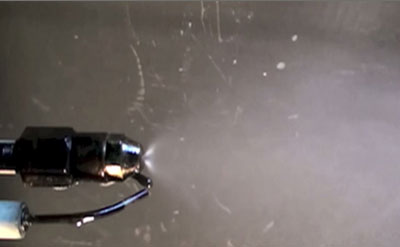Preventative Maintenance for Oil Burners

Preventative Maintenance for Home Heating Oil Burners

Your oil burner is one of the most important parts of the heating system. Without a properly cleaned and maintained burner, debris can easily clog the nozzle.
The nozzle of the burner is smaller than the tip of a needle, any water or dust can easily cut off the flow of oil to the rest of your system causing a disruption in service or an emergency service call.
When you have automatic delivery with Glow Oil you can get your preventative maintenance included with our service plan. Click the button to download more information about our Comfort Protection Plan.
Glow Oil's 16 Point Tune-Up for your Heating System
- Brush and vacuum the heat exchanger, smoke pipe, and chimney base. Clean the area above and around the heating system.
- Remove old oil filter cartridge, clean the filter bowl, flush the tank valve, and install a new filter cartridge and gaskets.
- Check and flush fuel lines ensuring you get a constant flow of oil to the pump. Replace the pump gasket and strainer. Install a pressure gauge in the nozzle port and adjust pump pressure to the manufacturer's specification.
- Remove the old nozzle. Flush the jet line and nozzle assembly. Check the nozzle size for the proper firing rate. We use only the manufacturer's recommended nozzle with respect to firing rate, spray angle, and nozzle characteristics (hollow, solid, semi-solid, etc).
- Examine the combustion chamber for cracks and irregularities which may cause difficulties in the performance of the heating systems as well as health hazards.
- Check ignition: We carefully examine the electrodes and remove the porcelains from the holder which often hides hairline cracks. Check cable and bus bars or clip to make sure they are making contact. Check porcelains of the transformer for cracks, lint, or thin film of oil, which occasionally gets on areas and causes the circuit to ground out.
- Check the air handling parts. Clean and adjust all parts for lint and grease. Remove the motor and clean the burner fan. At the same time inspect the coupling and replace it if necessary. Check to make sure the end cone is not burned off or shows signs of scorching.
- Oil all motors; circulator, oil burner motor, and blower motor.
- On units with power venters, make sure the proving tube and blower wheel are clean and lube the motor with the proper lubricant.
- Check the CAD cells and relay for proper operation. On units with stack relays, clean the helix of soot and reinstall. Disconnect the motor circuit and test the relay for safety.
- Steam systems: The boiler should be drained, flushed, and refilled to 3/4 full on the gauge glass. Gauge glass should be cleaned if dirty or replaced if needed. The low water cutoff should be flushed and tested. Remove the pressure control from the boiler and thoroughly clean out sediment that may have collected.
- Hot water systems: Check the altitude gauge for pressure on the system, and also to make certain there is water at the highest radiator. IF there is an expansion tank, it should be drained. Examine air pressure thanks for waterlogging. Check the aquastat reading so that settings for hot water have a 30 degree differential between the circulator and the high limit. (Example: if the high limit is set for 200 degrees for boiler water, the reverse acting aquastat should be set no lower than 170 degrees for the circulator to cut in.
- For warm air system: Check heat exchanger for any visible cracks or holes. Check air filters and replace or clean them, depending on the type of filter. Check humidifier for proper operation. Replace medias in accordance with the manufacturer's instructions. Check blower belts and adjust for proper tension.
- Examine the position and setting of draft control.
- Perform a complete combustion analysis and efficiency test procedure using a digital combustion analyzer.
- We will leave the work area as tidy as we found it and provide a verbal report of the work performed, including any additional work that may be necessary for your heating system to run at peak performance.
